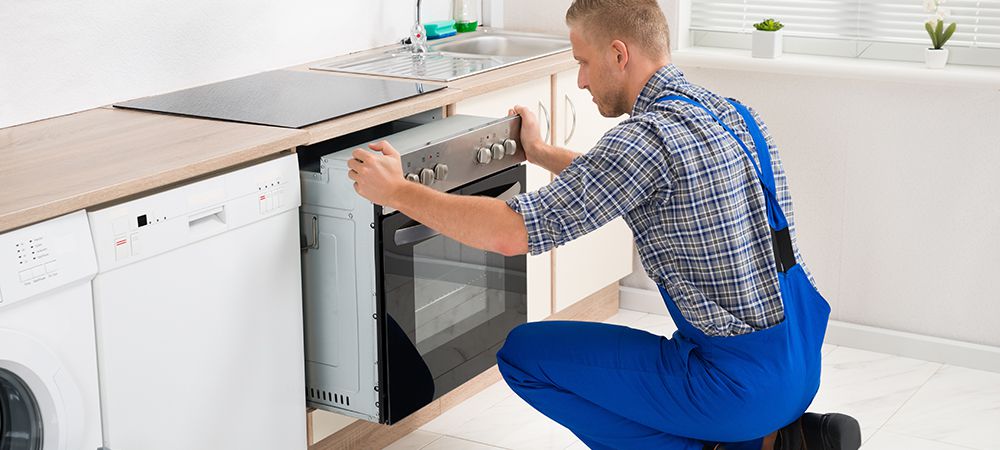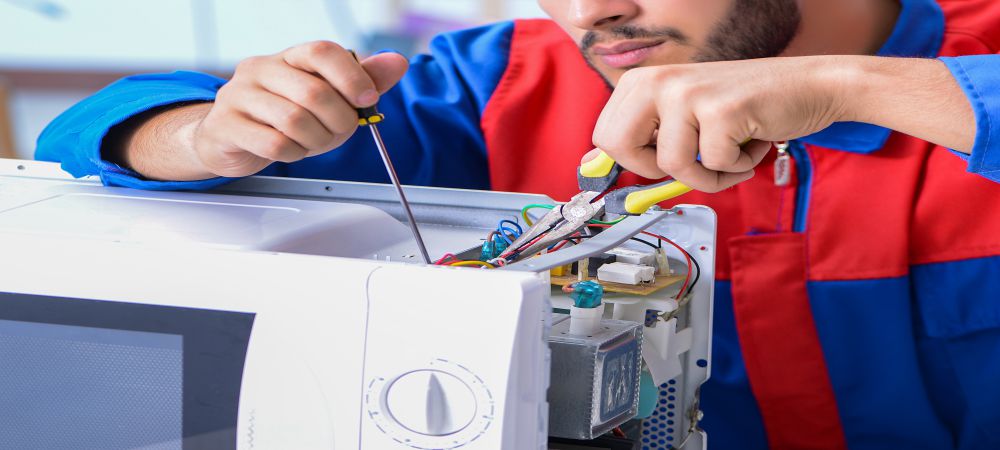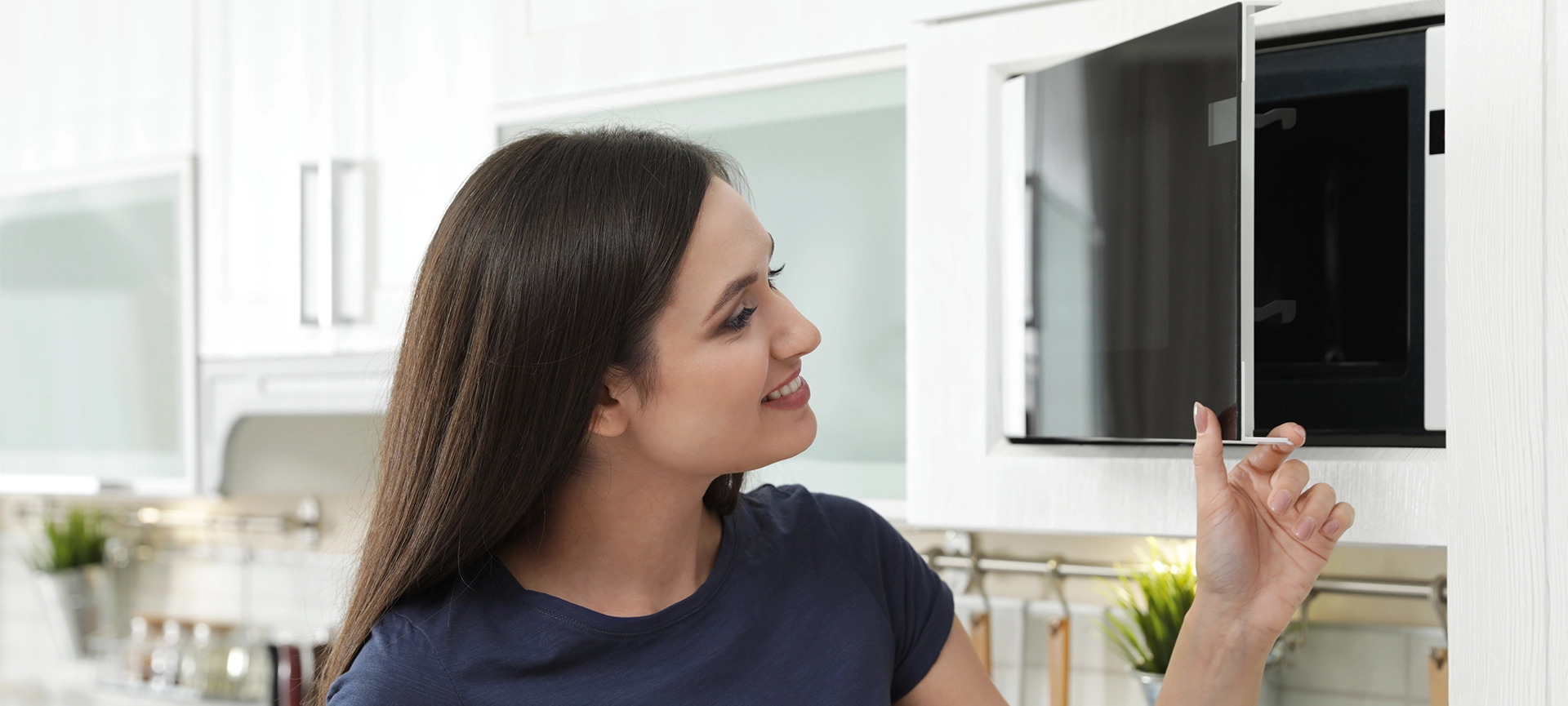All household appliances will exhibit signs of wear and tear at one point. As an appliance owner, this is something you will have to come to terms with early on. For electric ovens and gas ranges, one of the most common problems you will encounter is your appliance not turning on. Often, the problem will present itself just when you are about to prep some food for yourself or your family.
But don’t worry. You may be able to figure out or even fix this issue the do-it-yourself way. You just need to be patient and inspect your oven meticulously. All your time and effort also won’t be wasted even if you end up having to seek the help of an appliance repair professional. Since you have already done some troubleshooting, the technician will spend less time and labour, which could help lower the diagnostic fees.
In this article, we’ll take a look at the top reasons why your oven or range won’t turn on – and what to do about it.
Related article: What Is the Cost of Repairing an Oven in Toronto?
Here’s Why Your Oven Won’t Turn On and the Solution
An oven is essentially a kitchen appliance designed to cook and heat food. It comes in a wide range of types, depending on the energy sources, heating styles, features, applications, sizes, and many other factors. But perhaps the most important defining quality has to do with the power source – gas or electricity.
Whether you own a gas or electric oven, you may encounter the dreaded problem eventually – your oven failing to turn on. There are many possible reasons for this, but it mostly boils down to one (or more) components going kaput.
Here are some things to keep in mind before inspecting your oven:
- Don’t forget to disconnect your oven from the power supply before proceeding with the troubleshooting process.
- Always check the oven parts for any visible damage. You may also want to clean and dislodge any dirt or debris with an old toothbrush.
- Refer to the instructions manual on how to access different parts of your oven. After all, the location of these components, as well as how to access them, may vary greatly depending on the oven’s manufacturer, make, and model.
- When in doubt, always call an appliance repair professional. Your safety should always be your first concern.
1. Damaged Heating Element
The heating element – sometimes referred to as the “baking coil” or “baking element” – is an essential component of electric ovens and ranges. Essentially, it is in charge of creating the heat needed for baking and broiling.
A functioning heating element will glow a bright red colour. If it doesn’t, it may already be burned out. You should notice signs of visible damage, including holes or blisters.
What if there are no signs of overheating but the coils still won’t emit that glow? In this case, you might want to test the baking coil for continuity with the use of a multimeter. The lack of continuity indicates that the element has gone kaput and needs to be replaced. Thankfully, this is relatively easy to do.
Related article: Oven Not Heating: 5 Common Reasons Your Oven Isn’t Heating
2. Weak or Broken Igniter
Aside from a damaged heating element, a faulty igniter is another common culprit for a gas oven that won’t switch on. An igniter works by drawing electric current through the safety valve, which turns on the oven. After obtaining the right oven temperature, the igniter will turn hot, emit a glow, and ignite the gas.
If the igniter has gone bad, it won’t be able to turn on the safety valve, preventing the oven from heating properly. For example, you may notice the igniter glowing for more than a minute without igniting the gas flame – a sign that it is not strong enough to open the gas valve and may need to be replaced. If the igniter won’t even glow or spark, we recommend testing it for continuity using a multimeter.
3. Broken Thermal Fuse
The thermal fuse is an electrical safety device designed to automatically trip or shut down when the oven overheats. This causes the oven to stop working. To know if the thermal fuse has blown, you will have to test it for continuity using a multimeter. Unfortunately, an oven thermal fuse is only meant for one-time use and can’t be reset, which means that it must be replaced if it doesn’t have continuity.
4. Spark Electrode
The spark electrode is a vital component in gas ovens and ranges. It is essentially akin to a spark plug. Once the spark module produces enough voltage, the spark transfers from the tip of the electrode to the shield, consequently igniting the burner.
If the spark electrode is damaged, it may not be able to ignite the bake and broil burner, which, in turn, could prevent your oven from switching on. You may want to visually inspect the electrode – either the casing or the tip may show signs of damage and general wear and tear. If so, the old spark plug has to go and be replaced by a new one.
5. Faulty Temperature Control Thermostat
The thermostat is meant to regulate the temperature inside your gas or electric oven. It is outfitted with a temperature sensor or probe, which measures the warmth inside your appliance. It turns off the heat upon reaching a certain temperature, and reactivates the baking element once the oven temperature begins to drop. This cycle is repeated to maintain the right cooking temperature inside the oven.
If the temperature control thermostat is broken, your oven may not be able to turn back on. This component can’t be fixed and will have to be replaced. Unfortunately, it is not easy to test the thermostat on your own. If you have tried the other options in this but to no avail, consider replacing the thermostat.
6. Defective Oven Control Board
The oven control board, as the name suggests, is in charge of controlling all the electrical equipment inside your gas or electric oven. If it is broken, the heating element or thermostat may not function properly, preventing your appliance from turning on. With that said, make sure to check the control board to see if it has burned or shorted out.
A broken control board, however, is rarely the culprit for an oven not turning on. So, consider replacing it only when you have exhausted all the other options in this list.
Related article: How to Repair an Oven Not Heating Up
7. Malfunctioning Relay Board
Some ovens come with a relay board instead of a control board. This component is equipped with relays, which work by controlling the amount of voltage that goes to the baking elements. A single malfunctioning relay could already cause your oven to stop working properly.
A broken relay board, however, is not a common reason why your oven won’t turn on. Make sure to check all the oven’s heating components first, as well as the other items in this list. If they are all in working order, the relay board might be defective, requiring a replacement part.
When to Call a Professional to Fix Your Gas or Electric Oven
Failing to turn on or heat up is one of the most common issues that your electric oven or range will encounter at one point or another. Thankfully, the problem can easily be diagnosed and fixed. Often, it is just a matter of replacing the broken components.
What if you have carefully followed the instructions above, but you are still unsure which part is broken? Or, perhaps you simply feel uncomfortable at the thought of fiddling with your oven? If so, it might be time to call an appliance repair company and let the pros handle the problem.
Here at Prime Appliance Repair, we are more than equipped to deal with your malfunctioning oven – regardless of the type and model. After all, we service some of the most popular oven and range brands available in Canada. Call us at 647-931-1114 or fill out this contact form to schedule an appointment today.








